Boston Children's Museum
308 Congress Street, Boston, MA 02210
617-426-6500
© Boston Children’s Museum 2024
Website Design by Jackrabbit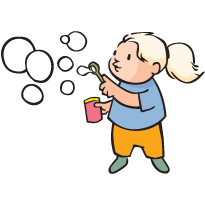
Are bubbles always round? Does a bubble look the same in the air as it does on the table, or in a soda bottle—or in a cube? Experiment with these materials and find out!
VIEW ACTIVITY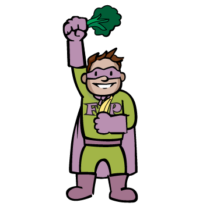
Most children have come into contact with a wide variety of fruits and vegetables, but few have ever taken the time to examine these foods closely. Offering children an opportunity to carefully study objects that seem so familiar will give them a chance to practice their observation skills and may encourage them to more carefully observe other things that they take for granted. In addition, children will gain a fresh perspective on familiar fruits and vegetables and learn about some not-so-familiar kinds as they identify, investigate and sample a variety of these foods.
VIEW ACTIVITY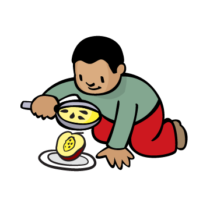
Most children only have a basic understanding of their own bodies, and they often have little choice about what they are served at meals. At the same time, these children are just becoming acquainted with a variety of foods. The more opportunities children have to think about what they eat, be curious and adventurous in trying new foods and begin to take responsibility for their own lifestyle choices, the more likely they are to make healthful choices when they do get to decide what fuel they are putting into their bodies. In this activity, children will learn how to read about the nutritional information for some of the foods they already eat. Learning to read these labels is one of the most helpful tools we have in gaining control of our eating habits.
VIEW ACTIVITY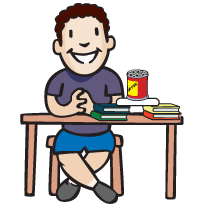
Design engineering is a great way to teach kids problem solving, teamwork, materials and tool use and the design process in general. In this activity, your students will also learn about structures and strong shapes used in structural design.
VIEW ACTIVITY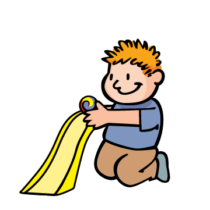
Children get too few chances to experiment with materials and to design and build objects of their own creation. These Raceways and Roller Coasters activities allow your students these opportunities, and engage them on many different levels as well. Building these tracks and rolling marbles down them help children to develop problem-solving and teamwork skills and touch upon some basic principles of physics like energy, acceleration and momentum.
VIEW ACTIVITY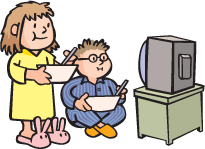
Most children only have a basic understanding of their own bodies, and they often have little choice about what they are served at meals. At the same time, these children are just becoming acquainted with a variety of foods. The more opportunities children have to think about what they eat, be curious and adventurous in trying new foods and begin to take responsibility for their own lifestyle choices, the more likely they are to make healthful choices when they do get to decide what fuel they are putting into their bodies. In this activity, children will learn how to read about the nutritional information for some of the breakfast cereals they like to eat. Learning to read these labels is one of the most helpful tools we have in gaining control of our eating habits.
VIEW ACTIVITY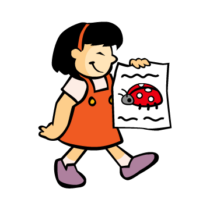
Persuasive writing is a skill that children will learn in school and will need throughout their lives. Writing is very often used to convey an opinion or to convince the reader to honor a request or change their behavior—and advertisers are extremely good at this style of writing. By studying advertisements and then creating their own ads for what at first seems like a tough sell (cute, cuddly bugs), children will not only practice persuasive writing, but they will also grow more familiar with some of the tricks that advertisers use to “lure us in”. In addition, students will learn to use printed materials (books, magazines, nature guides) as important references and will have to study the characteristics of their chosen insect to better understand how to advocate for it. And by focusing on an insect’s positive qualities, children can come to appreciate every living thing as an important part of our ecosystem.
VIEW ACTIVITY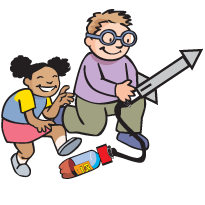
Engineering activities give kids a chance to develop problem solving and observations skills, to work with interesting and engaging tools and materials, and to learn how to work as a member of a team. In this activity, children get a chance to do all that—and to launch their creations into the air!
VIEW ACTIVITY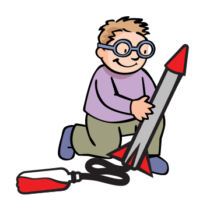
Engineering activities give kids a chance to develop problem solving and observations skills, to work with interesting and engaging tools and materials, and to learn how to work as a member of a team. In this activity, children get a chance to do all that—and to launch their creations into the air!
VIEW ACTIVITY
Team storytelling encourages creative writing and practice of written language. It also helps children learn how to write clear sentences and paragraphs that develop a central idea, and how to be thoughtful about the audience and purpose of written material.
VIEW ACTIVITY